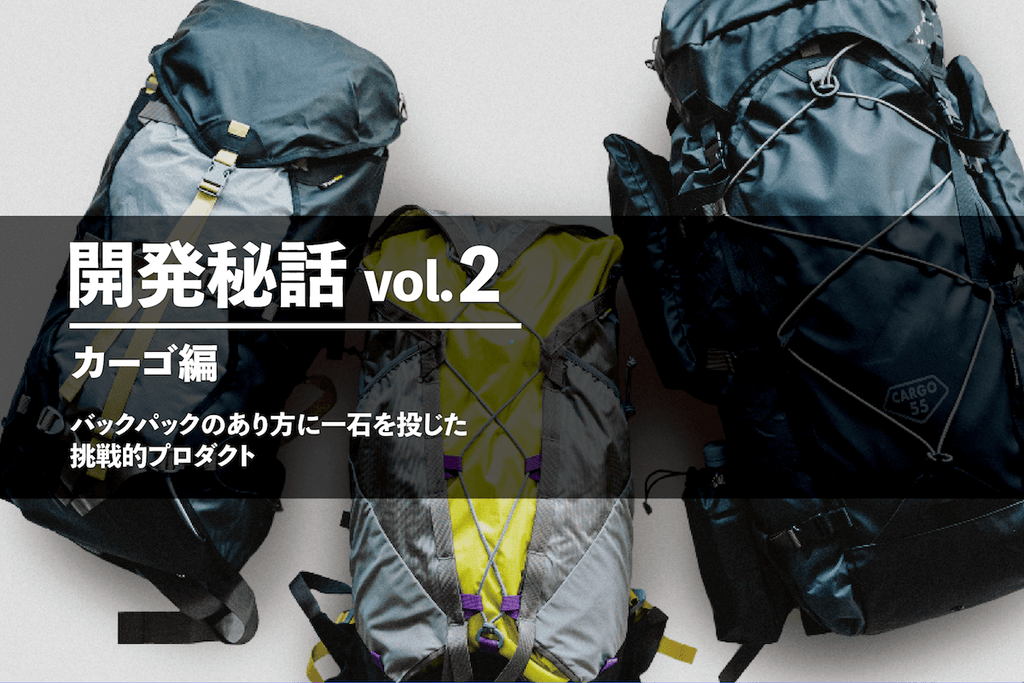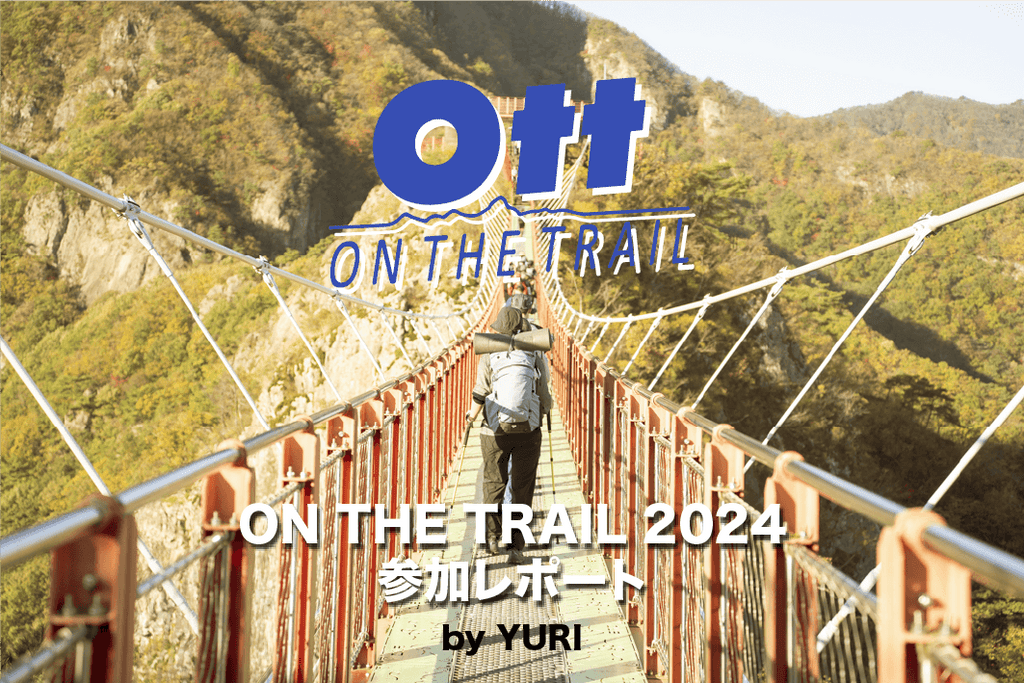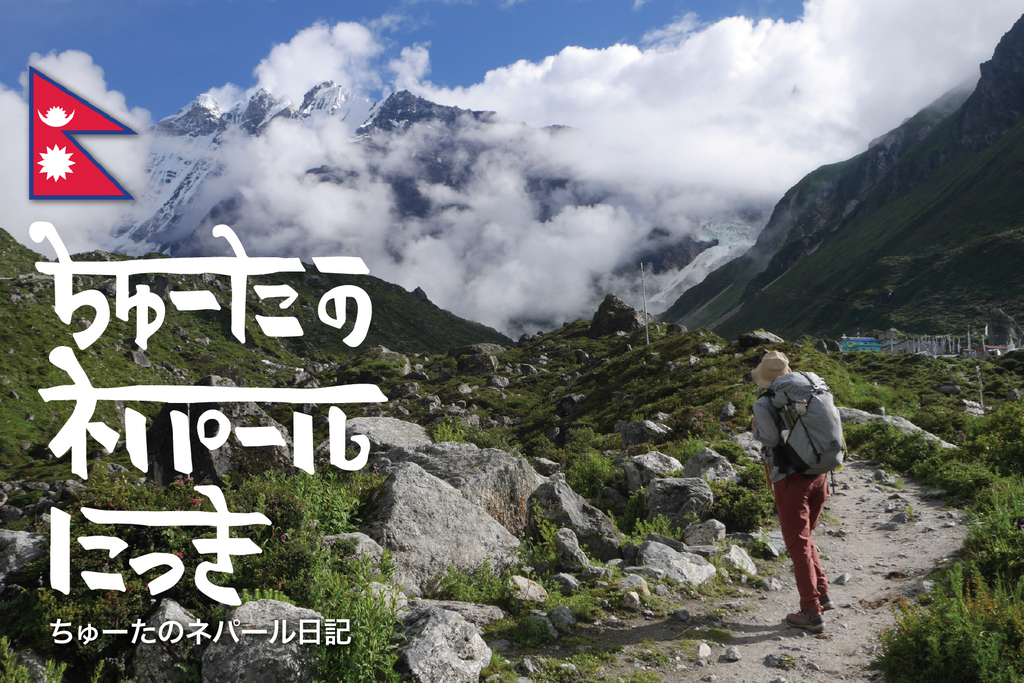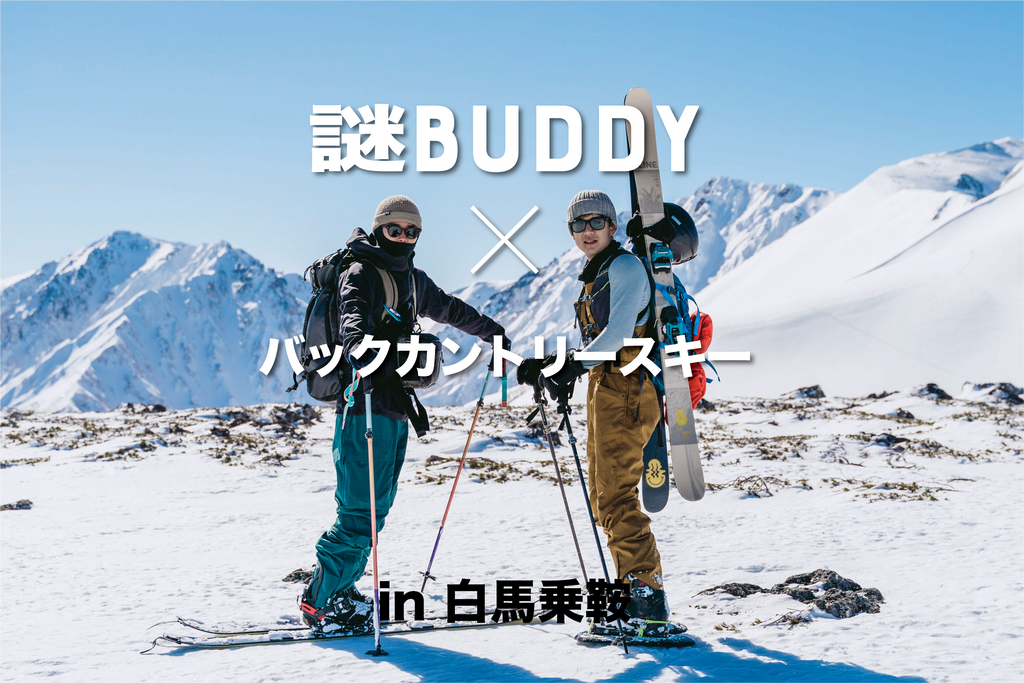MAGAZINE

Product History vol.2 Cargo
A challenging product that changed the way backpacks are made
"Development Stories" introduces the brand's history through Pargo Works' products. The second installment features the "Cargo" series, a reconstructed backpack. The "Cargo" series began with the "Cargo 35" in 2012, and has undergone repeated model changes, including the "Cargo 40" and "Cargo 55."
Its shape envelops the luggage, overturning the conventional concept of a backpack. How did this unique structure, which can be called a modern version of a backpack, come about? Let's take a look.

-The second development story is about the "Cargo" series. The current model is the large 55-liter backpack "Cargo 55", but there were previously 35-liter and 40-liter models. Both have a unique structure for a backpack, but can you tell us about the inspiration behind the Cargo series?
As I mentioned in the first article, before starting Pargo Works, I was a backpack designer, and one of the missions I had always wanted to achieve was to create backpacks under my own brand.
So, when making a backpack, I thought about what kind of tool it is in the first place. If you define the function of a backpack, it comes down to "carrying mountain equipment and taking it to your destination." This is like the starting point that I return to every time I design a new model in my 15 years as a backpack designer. I reconsidered something that I had been thinking about for a long time when developing it as a product.

Cargo 55 prototype
When we say "designing a backpack," you might think of thinking about functions such as capacity, shape, and pockets, but the goal is whether or not you can carry what you need on your back; the detailed functions and visual design are secondary elements.
The idea is the same for this cup. It can be summarized as the function of a paper cup to be able to pour liquid without spilling and the function of a cup holder to be able to hold it in your hand and drink it. I think the refill is an added function of this cup. That's how I see things. The backpack is the same, and I start designing it after going back to the basics.
This may be largely due to the fact that I am a product designer. My perspective may be a little different from that of ordinary people, but I wanted to start by asking myself, "What is a backpack, anyway?"

The structure is explained using a cup holder and a paper cup.
-Indeed, when it comes to backpacks, the structure is pretty much set, and although each manufacturer has their own unique features, it's really all about the details.
The purpose of a normal backpack is to carry your tools and take them to your destination. There are many ways to do this, and there is more than one way to carry it by hand. For example, you can carry it on your head or with both hands. However, the best way to climb steep mountains or walk long distances is to carry it on your back.
If, in 100 years, a race of people with super round shoulders were to take over the world and become unable to carry heavy loads on their backs, the shape of backpacks might change (laughs). Looking back at backpacks in this way, we can define them as tools for transporting tools to a destination, from A to B. So, we can see that the basic elements of this tool are the "function of storage" and the "function of carrying it on your back."

Field test
The development of the Cargo started with the question, "What would happen if we considered these two separately?" Probably around 2008. So we tested the storage and carrying functions separately.
Regarding "storage," this varies greatly depending on the purpose. For example, the volume of luggage and the amount of food vary depending on the style of mountain climbing and the season, so I wanted to make it "flexible" to accommodate that.
The second function is the "wearing" function. We found that this also changes depending on the body type. Specifically, the length of the back, the length of the shoulders, the length of the hips, etc. We thought that by adjusting something, we could achieve the optimal fit for each person.
Actually, when I thought about these two problems, the first thing that came to mind was a backpack. However, although backpacks are very practical, the frame is hard, they are heavy, and they are only easy to use for very specific purposes. So I wondered if I could generalize the backpack.
"Let's make a softer, lighter carrier." This led to the development of Cargo.

From the left, Cargo 35 (2012), Cargo 40 (2014), Cargo 55 (2020)
That's right, I've been using a backpack since I was young. The convenient thing about a backpack is that you can carry whatever you want to do on the weekend as long as you pack the equipment appropriately. You can just load it on the frame, so there's no need for space (laughs). When I went to the mountains by bicycle, I couldn't carry anything without a backpack, so it was perfect for the way I did things back then.
Although it's not something you carry on your back, I really like pickup trucks. You can put a motorcycle or a canoe on the back of the truck, and it's fun to be able to pack all kinds of toys into it. I've always loved things that have that kind of freedom and expansiveness.
However, only porters use backpacks, and almost no one uses them as their main backpack. "I'm the only one who goes up the mountain with a backpack."
That's why the fire started.

Visual of the first Cargo 35 when it was released.
The story of the first Pargoworks backpack
-Your idea came from a tool called a backpack, but what was the process by which it was developed?
So instead of just making the carrier itself, I decided to try updating it. The carrier itself is a good product, but there's nothing new about making one now, so I don't think I need to put in the effort.
So I thought about making it softer and lighter. Then, I thought, "Wouldn't that allow more people to play in more different ways?" That's how I started making it.

Cargo prototype.
It was the time when ultralight (UL) was becoming popular. I was trying it out myself and shifting all my gear. Then, I could do the things I used to do with 50L backpacks with smaller backpacks. It was a change of mindset.
"If you're hiking in the mountains in summer, you need 50L," "Let's buy Gore-Tex tops and bottoms," and instead of "Please bring a rain cover," people started saying, "A poncho is fine," or "Let's sleep under a tarp," and so on. It was a time when outdoor activities were becoming more free, and many people changed their way of thinking. There was also a feeling that a new trend had emerged and the fun of backpacks might be reevaluated.
Alongside the concept of a backpack, there was also another concept called the "origami concept." The structure involves pinching the unfolded body of the carrier at the top and bottom, and its simplicity, which can be made with very few materials and in just a few steps, was appealing.

Actually, before the brand name PAAGO WORKS, the name "ORIG" was also considered. It was inspired by origami (paper folding paper), and had the meaning of originality. The shuriken mark was also inspired by origami, and we were trying to create something ultra-minimalist like origami.


However, when I tried to make the "Origami Concept" into a product, it was very difficult to use. The idea was good, but I realized that if I stuck to the origami concept, I wouldn't be able to make a good product.
At that time, it wasn't a backpack at all. It didn't have a frame, and comfort was a secondary consideration. UL packs are products that give up on a lot of things. They sacrifice comfort, storage capacity, and are just light. I think it's simple and easy to make for the people who make them, but it felt like the product relied on that story.
I think I still had that amateurish feeling of "It's okay if I can carry it" or "It's fine if I can just fit it in." When I showed this to a friend, he asked me, "What's it for?" The concept was so far-fetched that I didn't really know what it was for. I was like, "Just figure it out!", but I guess it gave me a chance to rethink things.
-Even if you discover something interesting structurally, you still have to think about it from a different perspective as a product.
Actually, I was developing UL packs at the same time, but I decided to stop and make something even more amazing. I wanted to make Pargo Works a brand with a more free and creative feel.
As for "Cargo," even though we said that we reconstructed the carrier into a modern version, we didn't know if there would be any users in the first place. It was like, "Who would buy something like this?" So we were looking for fans who would agree with us, and we thought that there might be people who wanted the same way of playing and freedom. I think it was quite a gamble. Because there was no market (laughs).

Cargo 35
When it comes to backpacks, there are major brands such as Gregory, Osprey, and Millet, but they are all pretty much the same, with standardized carrying methods and capacity. Even if we entered that market, we wouldn't have a place, and it wouldn't be interesting in the first place.
I guess I had a feeling that I had to do it from a different angle. Instead of joining an existing genre, I wanted to create my own. As a backpack designer, I had been planning projects for various manufacturers, but proposals like "Cargo" were never accepted. That's why I felt like I wanted to do it myself.

The birth of "Cargo 35" with the designer's passion
-Starting with the origami structure, and going through various tests, how was Cargo 35 completed ?
The key is the structure. Gravity is applied to luggage, so it is pulled downwards. The problem was that it would fall below the length of the back. With a backpack, the rigid frame stops it firmly at 90 degrees, but we needed to come up with an alternative function.
To achieve this, we raised the bottom fabric and created a line that looked like a set square when viewed from the side. We also came up with a way to adjust this independently.

As for storage, in order to provide a certain degree of flexibility, it was necessary to compress it like a regular bag. To achieve this, we considered a structure that could be put on from the side. This is how it can be wrapped around and compressed tightly. The advantage of this is that if you add pockets to the sides and consolidate the functions, you can fasten it with two side panels. This was the basic structure.

Looking back at it now, I think I just wanted to do something new. There is enough space to fit a bottle, but if you want to put something bigger or bulky, I thought of a structure that would turn the top into a pocket. The fact that it expands only where you need it is also a form that embodies flexibility.
The first model did not use a buckle, but was designed so that you could pack it up and pull the cord to close it.
Regarding fitting, a mechanism that allows you to adjust the length of the harness is included. The hip belt is also removable and can be adjusted up and down, so the back length can be changed. The back is made of only an aluminum frame without using a regular foam.

--My honest opinion is that it seems like an interesting tool. Kind of like a gimmick .
I can really feel the desire to do something different from previous backpacks. But I don't really like the word "gimmick." I think of gimmick as design for design's sake. I think of it as something that is added to increase the value of a product.
With the Cargo 35, we divided the bag into two parts: storage capacity and carrying function. We wanted to make the back as flexible as possible. This is what we came up with when we thought about how to achieve that.

Like anything, the first model has the sharpest concept. The creator's intention is clear. However, there are always immature parts in terms of functionality and a gap with the market. In that sense, I think it was a product that made a splash.

Exhibition flyer from that time
-I really feel like you're asking the world, "This is what a backpack should be!"
By the way, this isn't a commercial product, but isn't it interesting? Around 2012, we held a MYOG meeting (a competition for handmade mountain gear) at Hikers Depot. Tsuchiya (Tomoya Tsuchiya, owner of Hikers Depot) invited me to come as a judge. But it would be boring to just be a judge, so I asked him if I could bring my own work, and this is what I brought.
This is an even more advanced version of the Cargo 35. The storage section is entirely made up of strings. Since the concept of the event was UL, we focused on making it as light as possible.

Come to think of it, the "Cargo 35" was sold as just the back. For people who do MYOG. From here, make the front part yourself (laughs). I think I made about 50 of them. I don't think there has ever been a manufacturer in the history of mankind that sells just the back (laughs).
Behind "Cargo" was the strong MYOG and UL scenes, and there was a trend to create something new, and I thought the ground was ready to accept it. UL also had a less established story and method than it does now, so it wasn't as fashionable, and I think people enjoyed the things themselves more.
"Cargo 35" was released in 2012. We sold it saying, "You can use it however you like," so people really used it however they wanted. The most impressive thing was that a flower shop used it to put flower pots in. It was just like a backpack. When we held events, it was interesting to meet people who used "Cargo 35" in various ways.
The second generation of the series, "Cargo 40"
- Next up is the Cargo 40. Is this an updated version of the first model?
It's the result of adjusting to the market to some extent. We simplified the adjustment of the back. I guess we tried to make it stronger by simplifying it. Because it's a backpack, people put all kinds of things in it. Then it gets pretty heavy, and we realized that it needs to be strong.
The back has both a panel and a frame. The back cannot be adjusted, but since the users are overwhelmingly male, we decided that one size would be fine. The outer fabric is sturdy and finished with PVC fabric so that it can be used for water play.


After the release of the Cargo 35, I went to the store and asked about it, and what changed was this flap part. There was no flap at first. It looks cooler without it. But there was a demand for a rain cover-like part, and it also had the function of supporting the bag, so we added it. The top of the side panel is curved so that the mat can fit in.

The selling point of the first model was the side pockets, but the fabric was weak and they often got worn out and had to be returned for repairs. I made it with the image of a backpack or a pickup truck, but the details were quite weak.
So we designed the second generation pockets to be less likely to get caught or torn, so they are basically flat when not in use.
Actually, I developed it with the intention of using it for packrafts. The pockets here are connected from the top, and you can put things in from the outside or the inside. This was a big hit. The response was amazing when we announced it, and it sold out in no time.

Come to think of it, we shipped them ourselves back then. At that time, we only had the Pathfinder, and we shipped them one by one in cardboard boxes from our home/warehouse. Backpacks were bulky, so we started renting a warehouse around that time.
The Cargo 40 is a more practical model. The capacity of the main body itself is almost the same as the Cargo 35. With the rain cover, it feels like it has an extra 10 liters.


Catalogue from that time
More freedom, more distance: Cargo 55
-About the third generation and current model, the Cargo 55. With each model change, the size has increased, but is there a reason for this?
Users began to voice their desire for a larger cargo bag. Shotaro Takahashi, a mountaineering writer who was our tester, had used it on various expeditions, and felt the need for a larger model that could be used for tough trips. So we decided to take on the challenge of creating something around 50 liters, and that's how we came up with the Cargo 55.

Shotaro Takahashi and other colleagues from the industry participated in the field tests.
Soon after we started development, we realized that if we made it larger with the conventional structure, it would become less convenient to use. Previously, Cargo bags were adjusted with a belt on the front, but we changed this to both sides. This allowed for a larger expansion range. The Cargo 40 had an adjustment range of around 30cm at most. The Cargo 55 can be adjusted in two places, so simply put, it is twice as wide. The downside is that it requires more buckles and belts.
First, we had to rethink how the load was received. The previous structure was not able to support all the luggage, so we added parts that could receive it. We also developed a new support mechanism.

The good thing about the Cargo 55 is that it's simple and flexible. You can use it with just a 50-liter dry bag, and you can carry long objects or box-shaped objects like a backpack. In that sense, it may be the most backpack-like design of the Cargo series.
-Not only has the Cargo 55's capacity increased, but the range of uses has also expanded dramatically .
The front panel system allows you to carry long items. It opens up a lot of possibilities, doesn't it? I think this system is revolutionary and changes the concept of backpacks.


The key point is that the buckles on the side are male and female. This means that you can fold the front panel and secure your luggage with just the buckles on the side. You can also shift the front panel to fasten it. If you do this much, it's no longer a backpack (lol), but it can be used in special ways. On the other hand, if you shift it up, it becomes a bag with a very thin gusset and no sagging at the bottom. You can just fold up the parts you don't use.


It has two tiers, the smaller one on top can hold food, and the lower one can hold other equipment, and there are side pockets so that the capacity can be increased or decreased. The flap can also be easily removed.
We also thought about various options. Until the Cargo 40, the inner bag was included as a bonus, and we wanted users to use a commercially available dry bag, but many users used it in a "hanging" state. So we made the inner bag strong and added seam treatment.

Two types of inner bags are included. The 15L one is convenient for storing food and other items you want to carry separately from the main bag.
-The "Cargo" series is a product that really conveys your passion as a backpack designer, and the joy you feel. It must have been hard work, but it also looks fun.
That's my job. My job involves worrying and coming up with solutions. But the process is fun.
The development of the "Cargo 35" began when Pargo Works was in the stage of deciding what to make next after releasing the "Pathfinder" in 2011. As a designer, I wanted to make a backpack. The "Pathfinder" was a product that had been in production since before Pargo Works, so in a sense the "Cargo 35" was the first product to be created from scratch.
This is the third generation of the "Cargo" series, but it has been around for nearly 10 years and has established a fan base. Recently, I've heard a lot of people say they went camping on foot using the "Cargo". I think it's easy for campers to use. They carry a variety of luggage.

The Cargo 55 also makes it easy to carry river touring equipment.
I would be happy if people use our products in ways that we would never have thought of. Usually, the manufacturer's recommended usage is the norm, but the outdoors is about freedom, so I want people to use it however they like. As a creator, I hope that people will think about it and enjoy it. At Pargo Works, we don't say, "You should use it like this," so it's fine if users play with it however they like. The "Cargo" series is truly a free plaything.








